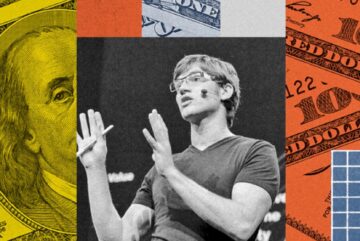Aaron Horvath in The Hedgehog Review:
 In 2017, the MIT Media Lab launched MyGoodness, an online game billed as a way to teach players to “maximize the impact of [their] charitable donations.”1 The game’s premise is simple. In each of ten rounds, you’re given one hundred dollars and asked to choose between two charities, each representing a different mix of characteristics. In one round, for instance, Charity A provides clean water to thirty-six adult women in South Asia and Charity B provides nutritious meals to twenty-eight senior men in Eastern Europe. In another round, Charity A provides medication to thirty-one girls in Southern Africa and Charity B provides medication to one boy—a family member of yours—in North America. The options are endearingly illustrated. Nutritious meals are depicted as bowls of rice, medication is depicted as a first-aid kit, and beneficiaries are depicted as yellow potato-like people wearing tattered clothes and forlorn expressions. When you pick a charity, the chosen potato people smile and throw their arms aloft as confetti fills the air. You’ve just saved their lives. The others aren’t so lucky. While their counterparts celebrate, the ones you’ve passed over turn blue and fall off the screen dead because of your decision.
In 2017, the MIT Media Lab launched MyGoodness, an online game billed as a way to teach players to “maximize the impact of [their] charitable donations.”1 The game’s premise is simple. In each of ten rounds, you’re given one hundred dollars and asked to choose between two charities, each representing a different mix of characteristics. In one round, for instance, Charity A provides clean water to thirty-six adult women in South Asia and Charity B provides nutritious meals to twenty-eight senior men in Eastern Europe. In another round, Charity A provides medication to thirty-one girls in Southern Africa and Charity B provides medication to one boy—a family member of yours—in North America. The options are endearingly illustrated. Nutritious meals are depicted as bowls of rice, medication is depicted as a first-aid kit, and beneficiaries are depicted as yellow potato-like people wearing tattered clothes and forlorn expressions. When you pick a charity, the chosen potato people smile and throw their arms aloft as confetti fills the air. You’ve just saved their lives. The others aren’t so lucky. While their counterparts celebrate, the ones you’ve passed over turn blue and fall off the screen dead because of your decision.
For all its cartoonish simplicity, MyGoodness adamantly positions charity as a series of rational calculations with life-and-death consequences. To be an effective giver, the site explains, your contributions should “result in saving the maximum possible number of lives.” You should research your options and let dispassionate analysis guide your open wallet. You shouldn’t let biases like geographic proximity or personal relationships steer your largess.
More here.
Enjoying the content on 3QD? Help keep us going by donating now.
